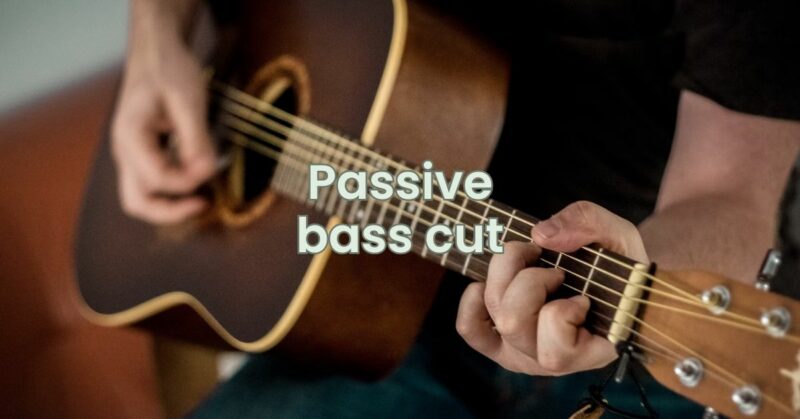Tone control is an essential aspect of crafting your guitar’s sonic identity. Among the various tools available for shaping your sound, the passive bass cut circuit stands out as an effective way to achieve tonal versatility. In this article, we’ll delve into the concept of the passive bass cut circuit, its role in sculpting your guitar’s tone, and how it empowers you to achieve a wide range of sounds without the need for active electronics.
Understanding the Passive Bass Cut Circuit:
A passive bass cut circuit is a tone control configuration that reduces the amount of bass frequencies in the guitar’s signal. Unlike active circuits that require batteries, the passive bass cut circuit achieves its tonal effects using passive components like capacitors and resistors.
The Effects of Passive Bass Cut:
Engaging a passive bass cut circuit can yield several tonal changes:
- Increased Clarity: By reducing bass frequencies, the passive bass cut circuit enhances clarity and definition in your playing, allowing individual notes to shine.
- Tonal Variability: The versatility of the circuit allows you to achieve a range of tonal variations, from bright and articulate to warmer and rounded.
- Treble Emphasis: With bass frequencies attenuated, the circuit places greater emphasis on the treble frequencies, resulting in a brighter and more focused sound.
Applications of Passive Bass Cut:
The passive bass cut circuit finds its place in various musical contexts:
- Rhythm Playing: Engaging the circuit during rhythm playing can provide added articulation and help your guitar parts cut through dense mixes.
- Lead Lines: When playing lead lines, the passive bass cut circuit can enhance note clarity, allowing your solos to soar above the accompaniment.
- Tone Shaping: The passive bass cut circuit is a versatile tool for tailoring your guitar’s sound to different musical genres and playing styles.
Customization and Personalization:
One of the strengths of the passive bass cut circuit lies in its adaptability:
- Capacitor Values: The choice of capacitor values allows you to fine-tune the degree of bass reduction and the resulting tonal character.
- Experimentation: Swapping out components or trying different capacitor values can lead to unique tonal possibilities, allowing you to create a signature sound.
- Compatibility: The passive bass cut circuit can be integrated into various guitar designs and pickup configurations, making it a versatile choice for customization.
Installation and Modification:
Implementing a passive bass cut circuit involves basic wiring skills and soldering. If you’re not comfortable with these tasks, seeking the help of a professional guitar technician is advisable.
Conclusion
The passive bass cut circuit is a valuable tool for shaping your guitar’s tone in a passive and versatile manner. By understanding its effects, applications, and potential for customization, you can achieve a wide spectrum of sounds that align with your musical vision. Remember that your guitar’s tone is a canvas for creativity, and with the addition of a passive bass cut circuit, you can paint sonic landscapes that enhance your musical expression and leave a lasting impact on your audience.


